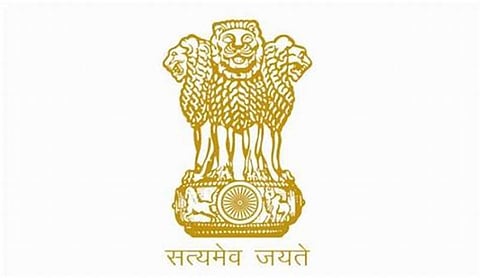
- Home
- Live Blog
- Breaking News
- Top Headlines
- Cities
- NE News
- Sentinel Media
- Sports
- Education
- Jobs

Ashish Kumar
(Ashish Kumar is the former Director General, Ministry of Statistics and Programme Implementation, Government of India.)
&
Rishi Jain
(Rishi Jain is a research associate at the Pahle India Foundation.)
The idea of decentralized planning, particularly in the Indian context, has been a recurring theme for decades. Despite its acknowledged importance, the implementation of decentralized planning has faced a number of challenges. These include issues such as devolution of powers, transfer of resources, and ad hoc decision-making. Despite ongoing efforts, the journey towards effective decentralized planning has been achieved with limited success.
With this backdrop, the Prime Minister’s attempt at district-led development comes as a clarion call for the states to act upon it. The emphasis is on making districts the fulcrum of economic growth, ultimately translating into the multifaceted development of the state. This entails transferring authority to the district level and entrusting the district administration with the responsibility for fostering multi-dimensional development in all parts of the district. This means giving greater autonomy to the districts in the planning and implementation of activities that are driven by the needs and requirements of the people in the district, with collaboration and support from the state and central governments.
Responding to the PM’s call, the Government of Assam has delegated its powers to the districts, reinforcing the idea of bringing the districts at the centre of the development process. By empowering Deputy and Additional Deputy Commissioners (DCs and ADCs) to act as catalysts for economic development, focusing on specific areas—infrastructure, revenue, agriculture and allied activities, industries and investment, and the social sector—the state has taken a leading role in changing the current landscape.
Monitoring change is crucial to understanding the effectiveness of the change, which can be achieved through analysis of the comparative performance of a district over the years and also in comparison to other districts. This entails the regular compilation of relevant and comprehensive economic indicators for each of the districts. One of the most comprehensive indicators in use is the district domestic product (DDP). DDP, if computed properly, has the potential to capture sectoral economic development and can help gauge strengths and weaknesses during the process of development. However, the current practice of estimating DDP by apportioning national and state-level aggregates to the district level using some indicators does not capture the intricacies of the economic realities of the district. Therefore, there is a need to develop a methodology that allows the computation of DDP using a bottom-up approach rather than just remaining top-down as is being done currently. For instance, out of the total Gross Value Added (GVA) of 3.75 lakh crore (2021–22) for Assam, the primary, secondary, and tertiary sectors contribute about 24%, 31%, and 45%, respectively. Further statistics suggest that these sectors have grown at a rate of 13.33%, 9.29%, and 9.70%, respectively. This macro-level outlook, however, overlooks district nuances, highlighting the crucial need for district-specific estimates. For example, the state is the largest tea producer in India and accounts for about one-seventh of global tea production. It is also considered one of the big players in natural gas. However, not all districts would be engaged in producing tea and natural gas. Therefore, there is a need for DDP.
The Assam government’s bold initiative to compute the DDP estimates from a bottom-up approach is a step in the right direction. The move is laudable, as it ensures robust estimates, highlighting the inherent capacity of each district. This will also help in identifying the potential strengths of each district and can help in choosing the thrust sectors or areas for preparing a ‘District Vision Document’ with targeted interventions. The move can further translate into policy actions, for instance, linking the thrust areas with initiatives like One District, One Product (ODOP), enabling districts to add more products and services to their current basket of just one good, to say, 2-3 products (ranked accordingly). Also, making districts the economic growth centres would help focus on the most efficient and economically effective goods and services, which would not only meet the domestic demand of the country but would also help propel the state’s exports.
As a further step in recognising the importance of districts in shaping their growth, the Assam government has also launched the Most Outstanding District Initiative (MODI), augmenting the growth process. The initiative includes a prize of INR 100 crore for the best-performing district, taking the best measures for solid waste management, sanitation, and clean drinking water. This would instill a competitive spirit among districts while ensuring the best possible environmental outcome for the people of Assam. The initiative is a welcome move as it would encourage competition amongst districts, thereby achieving holistic, environmentally friendly development.
What does this mean for other states? By leading from the front, Assam has set an example for others, showing that tapping the endowments with the right intent and a consistent approach can augment a state’s capacities by simply leveraging and empowering the existing machinery. DDP computation, though time-consuming, is the most effective means to help in focusing on specific sectors and empowering districts to bring much-desired economic growth and development at a faster pace.
The steps taken by Assam to achieve faster growth through this scientific and focused approach would be a lesson for other states. In a country with more than 750 districts, identifying critical strengths for each district requires persistent efforts at all levels and can be achieved in the medium term, with the benefits of the growth flowing to the citizens. The concentrated efforts can speed up the process, significantly contributing to India’s journey to becoming a developed nation as it heads towards its independence centenary.